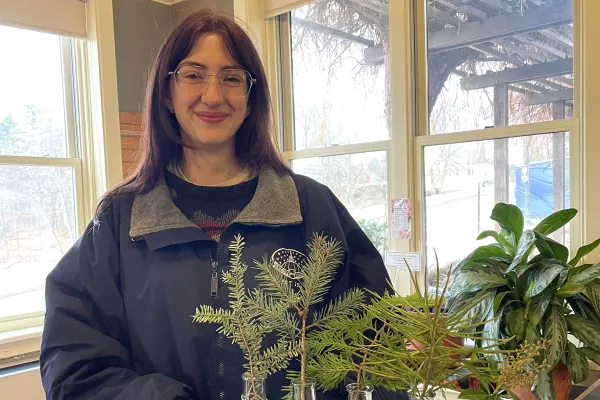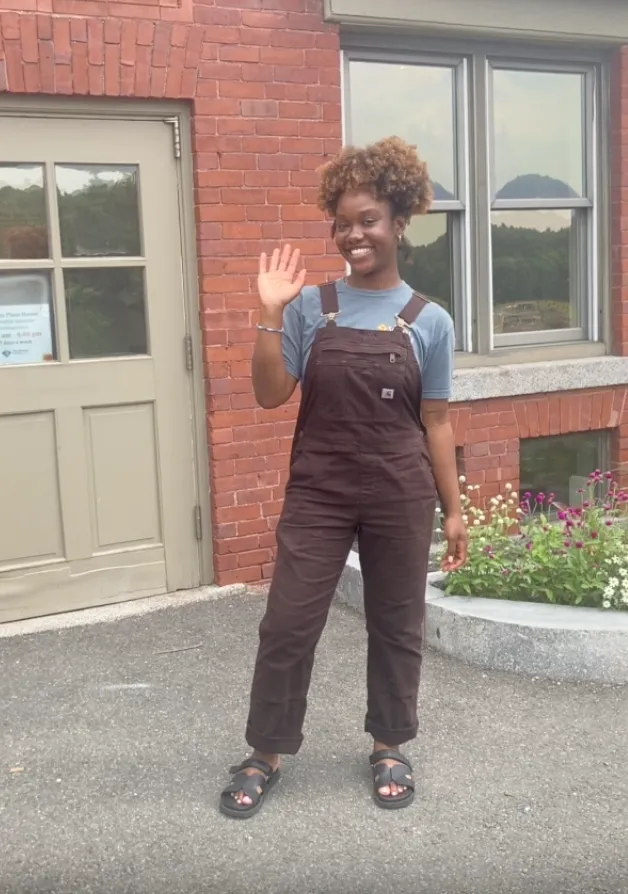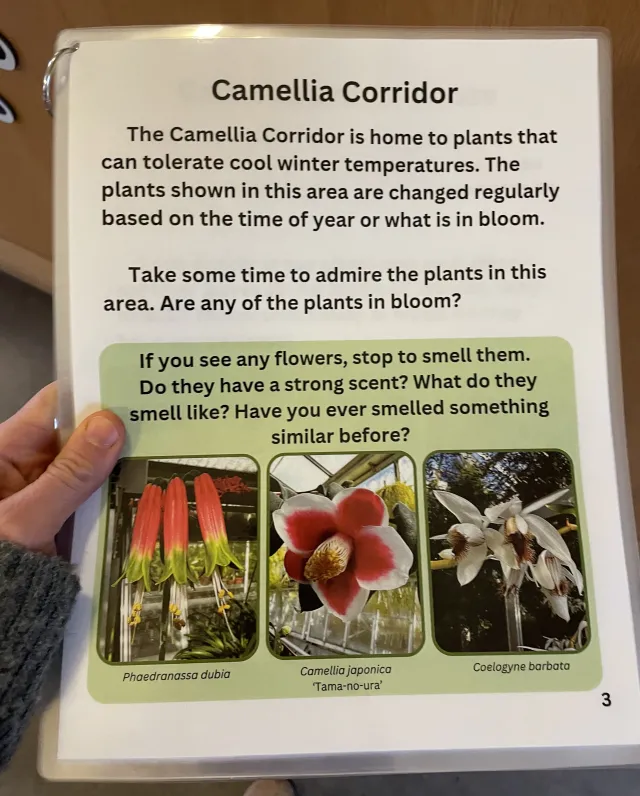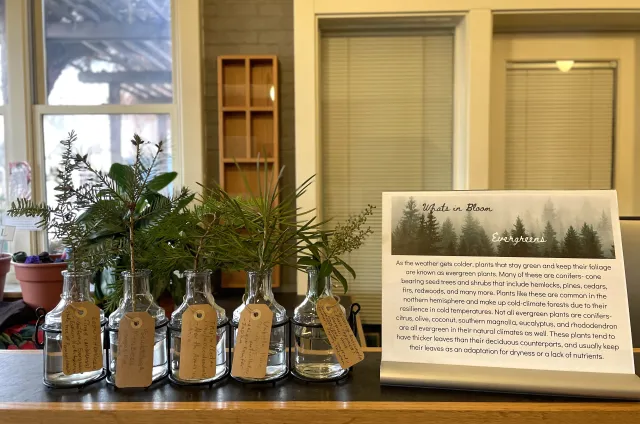Student Projects Enhance the Visitors' Experience
News

Published December 19, 2024
There’s a lot to discover upon a visit to the Botanic Garden of Smith College. Because of the 130 year history, and the fact that the conservatory has continued to expand over those decades, there are thousands of plants growing throughout multiple houses that when explored take visitors on a winding path through the conservatory. For first-time visitors, it can be tricky to understand how to get from one house to another, let alone how to find the restrooms. This can be an uneasy experience for visitors.
With that in mind, a student project was underfoot.

Thanks to the support of our Associate Director of Education and Interpretation Sarah Loomis, 2023-24 Botanic Garden Student Educator (BoGSE) Kris Cheaye ’26 created a resource in the form of a social story to help visitors become acclimated to the space and get a lay of the land before visiting in person. “A social story is a resource for children or people who are neurodivergent or for people that get nervous before they come to a new place,” said Cheaye. “Our video explains visiting Lyman by talking about what to do here, what’s accessible, and goes in depth explaining our spaces.” Cheaye’s social story video can be found on the “Visit” section of the botanic garden website.
Once visitors arrive at Lyman’s lobby they will find an additional resource on the front desk: a self-guided tour that was created by current Education Intern Paige Woodard ’25 called “Using Your Senses.” This guide is geared toward engaging our younger visitors, however people of any age can enjoy it.

“For both kids and adults, tuning in to our senses is such a powerful way to learn about the world around us, and learning to deeply observe is a tool that benefits everyone–whether you're a scientist, artist, or writer,” said Woodard. “I hope that this tour will encourage visitors to notice and discover the world around them, both inside and outside of the greenhouses!”
Creating a guide for visitors required a deep dive into educational resources for Woodard–what standards a resource guide should meet as well as gaining an understanding of how they are structured. “I started off the year by reviewing the Massachusetts Learning Standards, which gave me ideas of how visits to the botanic garden could fit into what students are already learning,” shared Woodard. “This tour was inspired by science standards focusing on observation and description.”
The result from that research is a multi-page, laminated guide that walks one through every house in Lyman and invites them to notice the plant’s textures, smells, and sights with specific prompts. In Succulent House, Woodard suggests closing one’s eyes, imagining a plant they noticed and describing it to other visitors in their group. In Camellia Corridor, she quite literally invites visitors to stop and smell the flowers.
In the lobby, visitors will also come across another student project aimed at enhancing the visitors’ experience: a small botanical pop-up exhibit curated by Education Intern Abagail Coleman ’26. The exhibit sits on the front desk in the form of five vases. The vases hold clippings of what is in bloom in the outdoor gardens at the moment. “The goal is to highlight different plants on campus for visitors to see and ask questions about, and we can point them to where they can be found on campus,” said Coleman. “Because the whole campus is a botanic garden!”

While not much is flowering outside as we enter the winter season, Coleman got creative and put together an exhibit showcasing evergreen’s from our outdoor collection. “Even though right now nothing is in bloom, we still have plants that are striking and visible,” shared Coleman. “Like the Japanese andromeda (Pieris japonica) that’s in the fifth jar. Gardener and Assistant Arborist Andrew Rebelo loves that plant so much and pointed it out to me for this exhibit.”
These three visitor-enhancing projects are the end result of a semester–and sometimes longer–of brainstorming, researching, and fine tuning a project. And it’s a small sample of the projects that students have created over the years in pursuit of creating rich educational materials for our space, and a valuable learning experience for themselves. “Establishing Lyman as a place to experiment, trial new ideas, and sometimes fail is what makes our botanic garden so unique. We aren’t afraid to have something go sideways in pursuit of learning,” shared Loomis. “I love creating a space where students feel empowered to bring their own ideas to life and I hope that visitors enjoy the ever changing projects and resources that our students create for them.”
A fun bonus of creating these projects were the unexpected things Cheaye, Woodard and Coleman learned along the way. For Woodard, the project pushed her to focus more on her own senses.” I noticed so many things in the greenhouses that I had never seen before, despite this being my second year working here!” she shared.
For Coleman, it was the information gained through all the individual research required to put these exhibits together. “Before last month I didn't actually know the difference between conifers and evergreens so that was something I learned through the display,” Coleman said.
For Cheaye, it was learning about the concept of a social story. “When I was first getting started on my project, I didn’t really know what a social story was,” shared Cheaye. “I had probably seen one, but I just didn’t know that it was a social story. I just wanted to help so that when people visit they feel welcomed and like they belong,” said Cheaye. “Botanic gardens can be intimidating–anything can be intimidating–so I wanted it to seem like a normal place that people come to without being super confusing or non-accessible. I want them to feel like ‘These people seem welcoming and I want to go visit.’”
With the help of these Smithie’s projects, we think we are one step closer to attaining that goal.